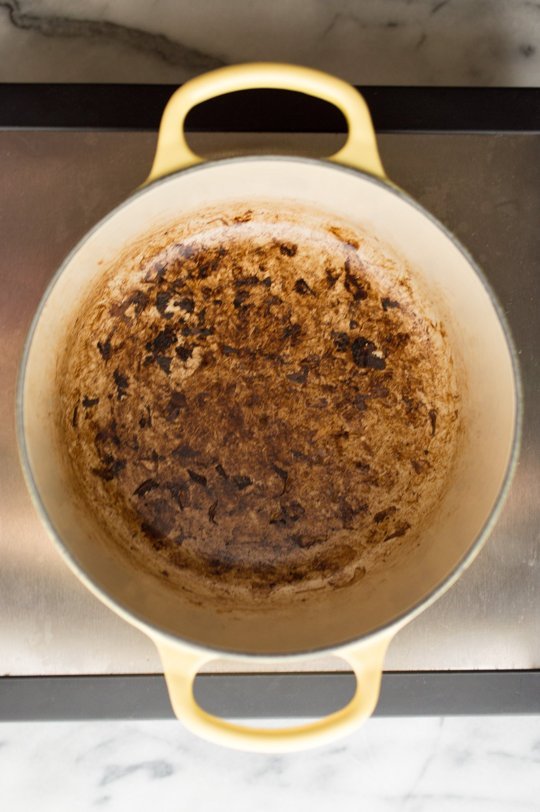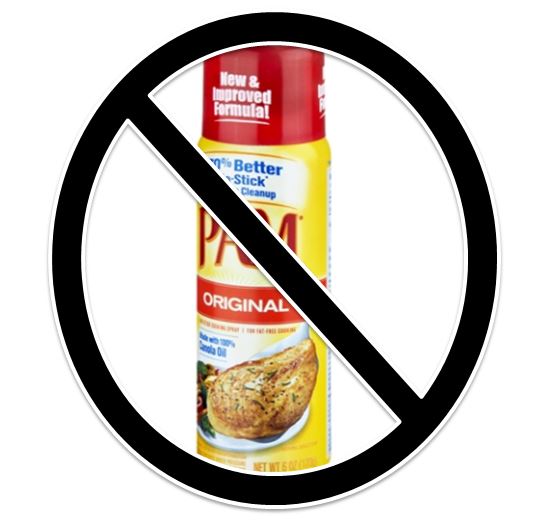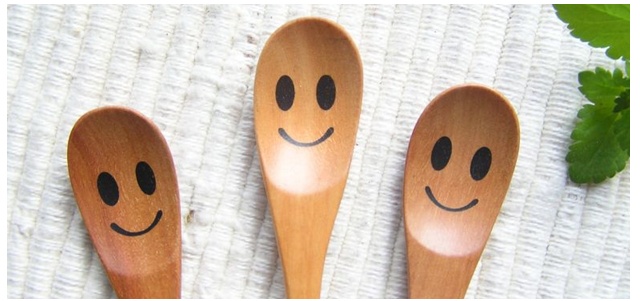That’s it! I’m Throwing Out My Ceramic Pan!

This is a sight I see on a regular basis that I absolutely despise. Oh how I hate my shiny red ceramic pan.
A few months back I needed a new pan. While at Kohl’s one day I decided to buy a beautiful shiny new ceramic pan on a whim. It had all these claims to be wonderful and nonstick and my hopes were high. Too high.
So here we are. A crusty old, burnt on mess every time I use it. I am fed up of cursing out this pan every time I use it and have to scrub it for at least 10-15 minutes to get the gunk off. I’m done with ceramic, I tell ya!
Well, you guys are all very smart readers and probably the kind who do some research first on a pan before you start using it. Heck, you probably just know how to take care of pans from stuff you’ve heard from your mom or articles you’ve read or whatever. Apparently I am not a smart consumer and didn’t know much about ceramic pans and taking care of them until the last time I had to take a time out and a few deep breaths from scrubbing this cute red pan and see what the heck I was doing wrong.
Once again, I was prideful and thought it must be the pan’s fault, when in fact, it was me and my ignorance.
There are indeed some golden rules to follow when caring for a ceramic (and other nonstick) pans.

Golden Rule #1: Always make sure you know what kind of heat your pan can handle. They have limits.
I love to sauté vegetables and I do this on a pretty high heat. Definitely hotter than is recommended for my little pan. Mistake #1 for me. Don’t let this be you.
Golden Rule #2: Banish cooking sprays FOREVER!!! Use real fats, NOT cooking spray.

Oh, what do you know? Cooking spray is actually the worst thing you could use on your pans. Go figure.
Banish cooking sprays, unless you want to frequently scrub the pan free of the residue that builds up in areas where the spray doesn't cook off (think sticky sides of the pan that just won't come clean with soap and water). Alternatively, try an oil mister you can refill with the oil of your choice and avoid the additives in traditional sprays which cause build up (soy lecithin, for one).
Pour a small amount of fat — oil, butter, etc. — on a cold pan before you use it and distribute it well. The idea is to bolster the non-stick surface by adding a layer of fat. If this is added too late, say after the pan is very hot, it will be more likely to soak directly into the food than aid the nonstick surface.
Golden Rule #3: Do NOT use metal spoons or spatulas. EVER!

Use only wooden or plastic utensils that won't scratch the surface. Stop sneaking in that metal spoon because all your other utensils are in the dishwasher and you're in a rush (guilty).
Golden Rule #4: Season your pan
Season the pan periodically to keep the surface performing at its best.
If you have broken any of the golden rules are stuck with a sticky, baked-on mess of a pan, here is how you can do some damage repair.
Clean and Repair:
Use a paste of equal parts baking soda and water to gently scrub the pan, using a non-metallic sponge or brush. Don't forget the sides and other areas where oil residue can build up. Rinse well and dry.
Repair the surface by pouring a small amount of vegetable oil in the pan, rubbing it into the pan and wipe off any excess with a paper towel.
Do not put the pan in the dishwasher. I know some claim to be dishwasher-safe, but the high heat and strong dish washing detergents weather a pan far quicker than elbow grease alone.
And remember, the average life span of a nonstick pan is around five years. You'll know your nonstick pan is on its last days if the surface becomes pitted or starts to peel.
I may have ruined this ceramic pan, but now I know how to take care of one from the get go so I can avoid having to clean to grimy, baked on messes all the time. May we all have long and happy relationships with our pans is my greatest hope! Feel free to share any other brilliant tips on cleaning and caring for your beloved pans in the comments. Your help is much appreciated by all of us.
- www.cooking.stackexchange.com
- www.thekitchn.com
 Mary Richardson
Mary Richardson
Weekly Newsletter Contributor since 2014
Email the author! mary@dvo.com
